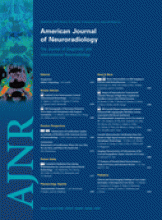Abstract
SUMMARY: Our aim was to review the etiologic background of isolated acute nontraumatic cSAH. While SAH located in the basal cisterns originates from a ruptured aneurysm in approximately 85% of cases, a broad spectrum of vascular and even nonvascular pathologies can cause acute nontraumatic SAH along the convexity. Arteriovenous malformations or fistulas, cortical venous and/or dural sinus thrombosis, and distal and proximal arteriopathies (RCVS, vasculitides, mycotic aneurysms, Moyamoya, or severe atherosclerotic carotid disease) should be sought by noninvasive imaging methods or/and conventional angiography. Additionally, PRES may also be a source of acute cSAH. In elderly patients, cSAH might be attributed to CAA if numerous hemorrhages are demonstrated by GRE T2 images. Finally, cSAH is rarely observed in nonvascular disorders, such as abscess and primitive or secondary brain tumors.
Abbreviations
- CAA
- cerebral amyloid angiopathy
- cSAH
- cortical subarachnoid hemorrhage
- CTA
- CT angiography
- CTV
- CT venography
- CVT
- cerebral venous thrombosis
- DSA
- digital subtraction angiography
- DWI
- diffusion-weighted imaging
- FLAIR
- fluid-attenuated inversion recovery
- Gd
- gadolinium
- GRE T2
- gradient echo T2-weighted imaging
- MRA
- MR angiography
- MRV
- MR venography
- PRES
- posterior reversible encephalopathy syndrome
- RCVS
- reversible cerebral vasoconstriction syndrome
- SAH
- subarachnoid hemorrhage
- SWI
- susceptibility-weighted imaging
- TIA
- transient ischemic attack
- TOF
- time of flight
- Copyright © American Society of Neuroradiology
Indicates open access to non-subscribers at www.ajnr.org












